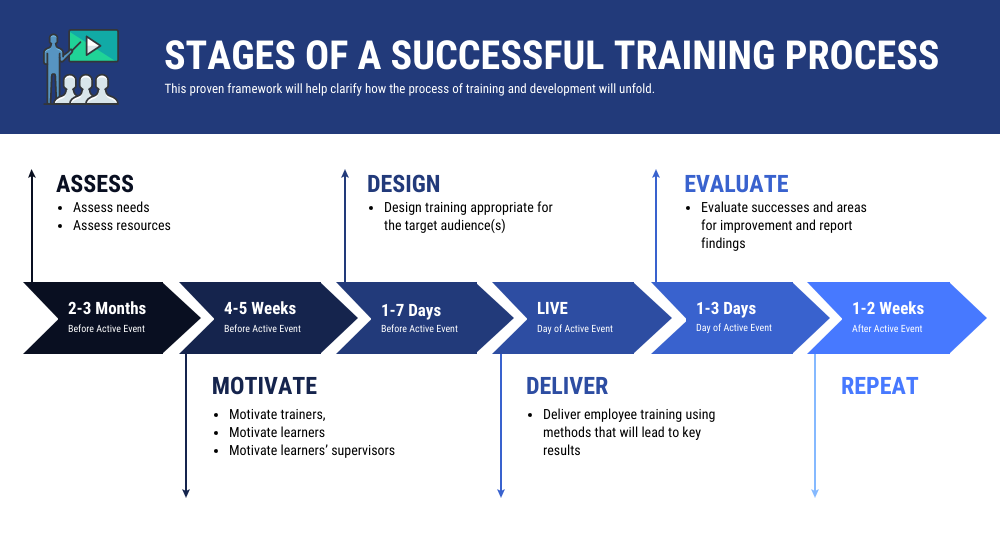Creating an effective employee training plan is essential for fostering a skilled and motivated workforce. Are you struggling to develop a training strategy that meets your organization’s needs? In this blog, we will explore how to craft a comprehensive employee training plan that not only enhances individual skills but also aligns with your company's goals.
Understanding Employee Training Plans
An employee training plan serves as a structured framework designed to enhance the skills and knowledge of employees. It outlines the specific objectives, methods, and resources necessary for effective training. A well-constructed training plan not only addresses skills gaps but also contributes to employee satisfaction and retention.
Key Components of an Employee Training Plan
To build an effective employee training plan, consider the following key components:
- Needs Assessment: Identify the skills gaps within your organization and understand the training requirements of your employees.
- Training Objectives: Establish clear, measurable objectives that align with both individual and organizational goals.
- Training Methods: Choose appropriate training methods, such as workshops, e-learning, or on-the-job training, to cater to different learning styles.
- Content Development: Create engaging and relevant training materials that facilitate learning.
- Implementation: Develop a timeline and allocate resources for the training program.
- Evaluation: Measure the effectiveness of the training through assessments and feedback.

Image Source: venngage.com
Steps to Create an Effective Employee Training Plan
- Assess Training Needs
Start by conducting a thorough needs assessment. This involves identifying the skills and knowledge gaps among employees. Use data from performance reviews, employee feedback, and organizational goals to pinpoint areas that require training. - Set Training Objectives
Once you've assessed the needs, establish specific training objectives. Use the SMART criteria—Specific, Measurable, Achievable, Relevant, and Time-bound—to ensure your objectives are clear and actionable. For example, an objective might be to improve customer service skills by 20% within six months. - Choose Training Methods
Select the most effective training methods based on your objectives and the learning preferences of your employees. Options include: - In-person workshops
- Online courses
- Mentorship programs
- On-the-job training
- Develop Training Content
Create engaging training materials that resonate with your employees. This can include videos, presentations, manuals, and interactive modules. Ensure that the content is relevant and easy to understand, making it easier for employees to apply what they learn. - Implement the Training Plan
Roll out the training program according to the established timeline. Communicate the objectives and expectations clearly to all participants. Encourage engagement by fostering an interactive learning environment. - Evaluate and Adjust
After the training, assess its effectiveness through surveys, quizzes, and performance metrics. Gather feedback from employees to identify areas for improvement. Use this information to refine your training plan for future iterations.
Best Practices for Effective Employee Training
- Customize Training Plans: Tailor training programs to meet the specific needs of different departments or roles within the organization. A one-size-fits-all approach may not be effective.
- Incorporate Technology: Leverage Learning Management Systems (LMS) to streamline the training process. These platforms can help track progress, manage resources, and facilitate communication.
- Encourage Continuous Learning: Foster a culture of continuous improvement by encouraging employees to pursue ongoing education and training opportunities.
- Recognize and Reward Progress: Acknowledge employees who successfully complete training programs. This recognition can boost morale and motivate others to participate.
Common Challenges in Employee Training
- Lack of Engagement: Employees may not see the value in training programs. To combat this, ensure that the training is relevant and aligned with their career goals.
- Resource Constraints: Limited budgets or time can hinder training efforts. Prioritize essential training needs and explore cost-effective solutions, such as online courses.
- Resistance to Change: Employees may resist new training initiatives. Communicate the benefits clearly and involve them in the planning process to gain buy-in.
Measuring the Success of Your Training Plan
To determine the success of your employee training plan, consider the following metrics:
- Completion Rates: Track how many employees complete the training program.
- Performance Improvement: Measure changes in employee performance before and after training.
- Employee Feedback: Gather qualitative feedback to understand employee satisfaction with the training.
- Return on Investment (ROI): Analyze the financial impact of the training on productivity and employee retention.
Conclusion
An effective employee training plan is vital for enhancing workforce skills and aligning employee development with organizational goals. By following a structured approach to assess needs, set objectives, and implement training, you can create a program that benefits both employees and the organization. Embrace the opportunity to invest in your workforce, and watch as it translates into improved performance and satisfaction.
Frequently Asked Questions
What is an employee training plan?
An employee training plan is a structured framework designed to enhance the skills and knowledge of employees.
Why is training important?
Training is essential for improving employee performance, increasing job satisfaction, and reducing turnover.
How often should training be conducted?
Regular training sessions should be conducted based on the needs of the organization and the employees.
By implementing these strategies, you can ensure that your employee training plan is effective, engaging, and aligned with your business objectives.




























